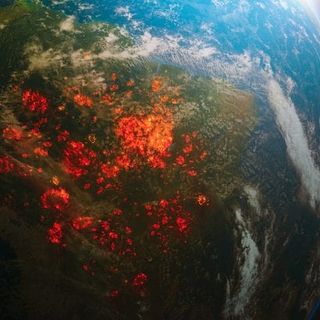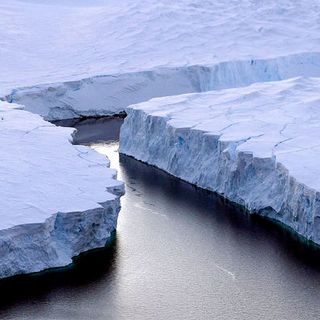A new study of glacial rivers has found they absorb carbon from the air more rapidly than dense tree canopies; during seasons when glacial melt is the highest, these rivers absorb 40 times as much carbon as the Amazon rainforest.
Unfortunately, in a Catch-22, climate change is threatening these glacier-fed rivers, limiting their effectiveness in cleaning carbon from the atmosphere.
Published in the Proceedings of the National Academy of Sciences, the new findings upend scientific understanding of rivers to date; until this point, rivers have been seen as contributing more carbon to the atmosphere than they absorb.
“It was a total surprise,” Kyra St Pierre, PhD, a biologist at the University of British Columbia and the study’s lead researcher, told The Guardian. “Given what we know about the rivers though … the findings are intuitive when you think about it. But we were initially very surprised to see what we did.”
Related on The Swaddle:
The Himalayas Are Set to Lose 66% of Their Ice by 2100
Rivers in temperate climates do emit more carbon than they absorb, as they are typically rich in plant and animal life and, therefore, see high levels of decomposition, a process that releases carbon from organic material. Rivers fed by glaciers, however, are silt-heavy and less compatible with organic life; as such, they have a much smaller carbon footprint due to less organic decay and a process called chemical weathering, which occurs when the riverine churn of particles and gases leads to reactions that bind together carbon dioxide and other compounds, removing the greenhouse gas from the atmosphere.
The researchers found chemical weathering helped clean carbon dioxide from the air as far as 42 kilometers away from a glacial river’s point of origin. And the rate at which these rivers clean carbon from the air is far higher than that of rainforests.
“On a per-meter-squared basis, these rivers can consume a phenomenal amount of carbon dioxide,” St Pierre told The Guardian.
However, she clarifies, the Amazon still overall takes more carbon out of the atmosphere simply because it covers more land area than glacial rivers and absorbs at a steadier pace (when not under attack from deforestation and related fires).
It’s an interesting, self-regulating side effect of melting glaciers, a problem that has accelerated in recent years as climate change worsens: Earlier this year, news reports revealed Himalayan glaciers are melting twice as quickly as the previous century and Alaskan glaciers are melting 100 times faster than previously believed. As glacier melt increases, so, too, does the flow of glacial river water and its absorption of the atmospheric carbon that contributes to global warming.
The findings offer a possible mitigating effect of climate change, except not all water from melting glaciers increase river flow; with increasing proof that rising oceanic water temperatures are melting glaciers from below, even as higher air temperatures melt them from above, some glacial meltwater directly joins the ocean, contributing to higher sea levels and not contributing to carbon absorption by glacial rivers.
St Pierre calls glaciers “a finite resource;” so too are the rivers they feed, suggesting the high rate of absorption of carbon by glacial rivers will not last.
“We’re potentially losing something that we’re deriving a lot of benefits from, before we actually fully understand it,” St Pierre told The Guardian.




